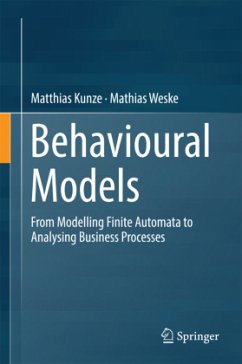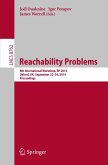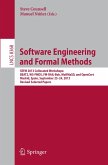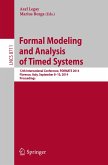This textbook introduces the basis for modelling and analysing discrete dynamic systems, such as computer programmes, soft- and hardware systems, and business processes. The underlying concepts are introduced and concrete modelling techniques are described, such as finite automata, state machines, and Petri nets. The concepts are related to concrete application scenarios, among which business processes play a prominent role.
The book consists of three parts, the first of which addresses the foundations of behavioural modelling. After a general introduction to modelling, it introduces transition systems as a basic formalism for representing the behaviour of discrete dynamic systems. This section also discusses causality, a fundamental concept for modelling and reasoning about behaviour. In turn, Part II forms the heart of the book and is devoted to models of behaviour. It details both sequential and concurrent systems and introduces finite automata, state machinesand several different types of Petri nets. One chapter is especially devoted to business process models, workflow patterns and BPMN, the industry standard for modelling business processes. Lastly, Part III investigates how the behaviour of systems can be analysed. To this end, it introduces readers to the concept of state spaces. Further chapters cover the comparison of behaviour and the formal analysis and verification of behavioural models.
The book was written for students of computer science and software engineering, as well as for programmers and system analysts interested in the behaviour of the systems they work on. It takes readers on a journey from the fundamentals of behavioural modelling to advanced techniques for modelling and analysing sequential and concurrent systems, and thus provides them a deep understanding of the concepts and techniques introduced and how they can be applied to concrete application scenarios.
The book consists of three parts, the first of which addresses the foundations of behavioural modelling. After a general introduction to modelling, it introduces transition systems as a basic formalism for representing the behaviour of discrete dynamic systems. This section also discusses causality, a fundamental concept for modelling and reasoning about behaviour. In turn, Part II forms the heart of the book and is devoted to models of behaviour. It details both sequential and concurrent systems and introduces finite automata, state machinesand several different types of Petri nets. One chapter is especially devoted to business process models, workflow patterns and BPMN, the industry standard for modelling business processes. Lastly, Part III investigates how the behaviour of systems can be analysed. To this end, it introduces readers to the concept of state spaces. Further chapters cover the comparison of behaviour and the formal analysis and verification of behavioural models.
The book was written for students of computer science and software engineering, as well as for programmers and system analysts interested in the behaviour of the systems they work on. It takes readers on a journey from the fundamentals of behavioural modelling to advanced techniques for modelling and analysing sequential and concurrent systems, and thus provides them a deep understanding of the concepts and techniques introduced and how they can be applied to concrete application scenarios.
"In this book, which is primarily a textbook for graduate students, Kunze and Weske present conceptual tools required to develop such a model. ... The authors provide bibliographical notes at the end of each chapter. This and the use of the same set of examples make the book quite easy to read and follow. Its comprehensive list of references has more than 70 entries. It is an excellent text." (Anoop Malaviya, Computing Reviews, February, 2017)








